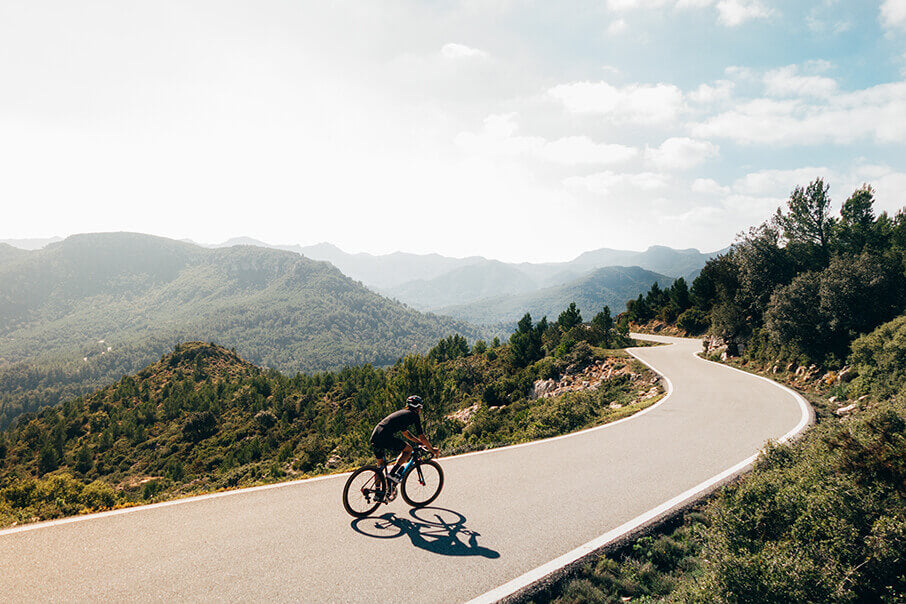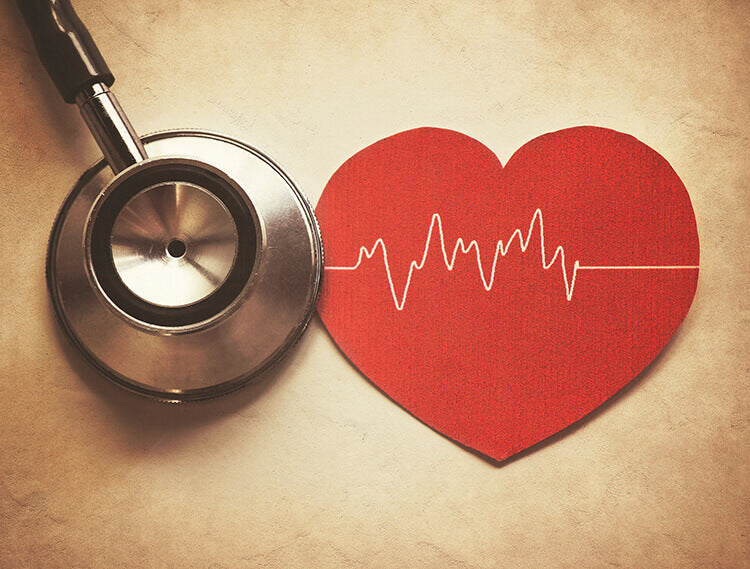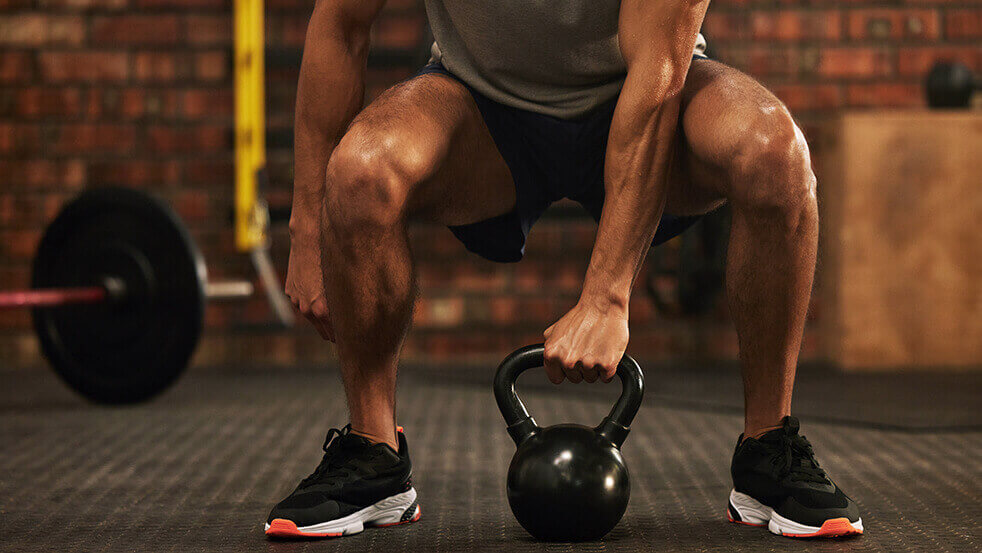Are you ready to ride? Cycling is an amazing way to stay fit, explore the outdoors, and join a thriving community of like-minded individuals. In this blog post, we will guide you through a comprehensive cycling workout beginner plan that covers everything from choosing the right bike and essential accessories to mastering basic cycling techniques and building a solid training plan. Let’s dive in and get ready to ride!
Key Takeaways
- Get the right gear, find the perfect bike fit and elevate your cycling experience with accessories like a phone mount and charger.
- Master basic skills & develop a structured workout plan to progress towards fitness goals while tracking results.
- Enhance your ride with group rides, skill development, nutrition tips for optimal performance & recovery techniques to prevent injuries.
Getting Started with Cycling: Tips for Beginners

Embarking on your cycling journey can be both exciting and daunting. But with the right guidance, you’ll be pedaling your way to success in no time. Before you start, selecting the appropriate bike and gear will enhance your safety and comfort during rides. Having essential bike accessories like:
- a helmet
- lights
- a pump
- a repair kit
- a phone mount and wireless charger
- a water bottle
on hand can pave the way for a smooth, enjoyable ride.
StrideCharge’s Bike Phone Mount and Phone Charger is a game-changer for keeping your phone secure and charged while you ride. Moreover, investing in proper cycling apparel like a well-fitting road cycling shirt and padded cycling shorts ensures a pleasant ride in the saddle. Don’t forget to visit your local bike shop for expert advice and fitting assistance.
Now that you’re all geared up, it’s time to start cycling and focus on mastering the basics.
Choosing the Right Bike
Selecting the perfect bike to suit your needs is crucial for a comfortable and safe riding experience. There is a vast array of bike types, including road bikes, mountain bike options, and hybrids, each designed for specific purposes and terrains.
The right bike fit, providing appropriate space between your body and the bike’s top tube, is of paramount importance. The quality of the bike’s components should match your budget, and consulting a certified personal trainer can help you make the right choice.
Essential Bike Accessories
When cycling, prioritizing safety and comfort is fundamental. Key accessories like helmets, lights, and repair kits are must-haves to ensure a secure and enjoyable ride. When selecting a helmet, consider features like ventilation, moisture control, and easy adjustability for optimal comfort.
Remember to prioritize visibility - securing bike lights and reflectors on your bike, pants leg, or helmet will enhance your safety during rides. Opt for headlights that suit your needs, from basic safety models to high-end, high-output lighting systems for a truly thrilling ride.
StrideCharge Bike Phone Mount and Phone Charger

One of the most convenient accessories for any cyclist is the StrideCharge Bike Phone Mount and Phone Charger. This innovative device allows you to securely mount your phone on your bike and charge it while the touch of a button. The StrideCharge mount is incredibly secure and will wirelessly charge your phone.
Maximize StrideCharge's potential by attaching the phone to your bike and charging it, relishing the ride with the peace of mind that your phone is safe and charged.
Proper Cycling Apparel
Donning appropriate cycling apparel holds equal importance to maintaining a robust cycling training plan. Opt for close-fitting, breathable materials like Lycra or Merino wool, designed to keep you comfortable during your rides. Investing in top brands like:
Investing in a comfortable saddle can significantly enhance your riding experience, especially during long rides.
Proper cycling attire will help you stay comfortable, aerodynamic, and prepared for various weather conditions, ensuring you make the most of your cycling adventures.
Building a Solid Foundation: Basic Cycling Techniques

Mastering essential cycling techniques is the foundation of becoming a skilled cyclist. Effective bike handling, smooth gear shifting, and correct body positioning are the cornerstones of an efficient, enjoyable ride. Developing these skills, along with the right cycling technique, will not only make you a more proficient cyclist but also boost your confidence and safety on the road.
Implementing a well-rounded cycling training plan that includes various workouts, such as intervals and hill training, will help you stay consistent and make steady progress. Additionally, practicing safe riding habits, such as staying visible and confidently navigating traffic, will ensure a secure and enjoyable cycling experience.
Proper Bike Handling and Control
Competent bike handling and control are indispensable for a smooth, safe, and efficient journey. To master bike handling, remember to:
- Brake and slow down before entering a turn
- Aim for the outside corner of the turn
- Lean the bike into the turn (not your body)
- Gently push on the handlebar and pedal on the inside of the turn for a smoother ride.
Standing while cycling can help you tackle steep hills by transferring your weight into the pedals and increasing your heart rate. Feathering both brakes at the same time is the recommended braking technique to maintain control during your rides.
Shifting Gears and Cadence
Optimizing your cycling performance hinges on efficient gear shifting and maintaining a steady cadence. Here are some tips to help you achieve that:
- Aim for an ideal cycling cadence of between 80-100 revolutions per minute (rpm).
- To shift gears smoothly, use only one shifter at a time.
- Avoid cross-chaining, which means avoiding extreme gear combinations (e.g. big chainring and big rear cog, or small chainring and small rear cog).
- Anticipate terrain changes and shift gears accordingly for a better ride.
Perfecting your pedaling technique can also help maximize your cycling power – for instance, imagine scraping mud off the bottom of your shoe as you pull your foot through the bottom of the stroke.
Riding Posture and Body Positioning
Maintaining a relaxed, efficient posture while cycling is pivotal for balance, control, and amplifying your pedaling efficiency. Adjust your saddle height on your stationary bike so that your leg is almost fully extended when the pedal is at the bottom of the stroke.
To ensure optimal control and performance, distribute your weight evenly between the saddle and the handlebars. Proper body positioning will help you stay comfortable and focused during your rides, ultimately enhancing your cycling experience.
Developing Your Cycling Workout Plan
For consistent progress and achieving fitness goals, a structured cycling workout plan is indispensable. Establishing training zones based on your maximum heart rate will help you target specific areas of development and prevent overexertion. A sample 6-week training plan tailored for beginners can guide you in building your cycling fitness and skills progressively. Setting realistic goals and tracking your progress throughout your training will keep you motivated and focused on your objectives.
Incorporating cross-training workouts, such as strength training, can supplement your cycling routine and help you reach your fitness goals faster. Some examples of cross-training workouts for cyclists include:
- Strength training exercises, such as squats, lunges, and deadlifts, to build leg and core strength
- Interval training workouts, where you alternate between high-intensity efforts and recovery periods, to improve your cardiovascular fitness and power
- Hill training workouts, where you tackle steep inclines to build leg strength and improve your climbing ability
By incorporating these cross-training workouts into your routine, you can challenge yourself, improve your performance, and become a stronger, more skilled cyclist.
Establishing Training Zones
Training zones allow for targeted improvement areas, mitigating the risk of overexertion. These zones are based on your maximum heart rate and can help you make steady progress without risking harm to yourself.
Incorporating training zones in your workout plan will enable you to target particular aspects of your fitness, such as endurance, speed, or power, ultimately enhancing your overall cycling performance.
Setting Realistic Goals and Tracking Progress
Staying motivated and focused on your objectives requires setting realistic goals and tracking your progress. By regularly evaluating your performance, you can make any necessary adjustments to your training plan, ensuring you stay on track and achieve your goals in a timely manner. Working with a nasm certified personal trainer can further enhance your progress and help you reach your goals more effectively.
Remember, consistency is key – with dedication and a well-rounded stationary bike workout plan, you’ll be well on your way to becoming a stronger, more skilled cyclist.
Enhancing Your Cycling Experience: Group Rides and Skill Development

Participating in group rides and focusing on skill development can take your cycling experience to new heights. Group rides offer camaraderie, motivation, and the opportunity to learn from more experienced riders. In addition to group rides, mastering specific riding skills such as climbing, descending, and cornering can greatly improve your overall performance and enjoyment on the bike.
By challenging yourself with group rides and honing your cycling abilities, you’ll not only become a more proficient cyclist but also expand your cycling community and create lifelong friendships. Embrace the journey and enjoy the ride!
Benefits of Group Rides
Group ride offers a plethora of advantages, including:
- Social interaction
- Community building
- Skill development
- Motivation
Riding with others can help you explore further and faster, as the group’s collective energy and support push you to achieve greater heights.
There are various types of group rides, such as charity rides, club rides, and organized rides, catering to different interests and skill levels. By participating in group rides, you’ll not only enhance your cycling skills but also build meaningful relationships and create lasting memories.
Improving Climbing, Descending, and Cornering

Mastering essential cycling skills like climbing, descending, and cornering can significantly improve your performance and enjoyment on the bike. To improve your climbing, maintain a steady pace and rhythm, utilize proper gearing, and stay relaxed and focused on your breathing.
For descending, grip the handlebar firmly, brake early and gradually, and get low and aerodynamic to maximize your speed. To enhance your cornering, aim for the apex on the inside, strategically look through the corner, and shift your weight to the outside foot and inside hand for improved stability.
By focusing on these specific training tips, you’ll become a more confident and efficient cyclist.
Nutrition and Hydration for Cyclists
To maximize your cycling performance and recovery, nutrition and hydration hold a pivotal role. Fueling your rides with carbohydrates and protein provides your body with the energy it needs to power through tough workouts and helps in post-ride recovery. Maintaining optimal hydration levels is also essential for preventing fatigue, muscle cramps, and other issues that can hinder your performance.
By paying attention to your nutrition and hydration, you’ll be able to perform at your best, recover more efficiently, and enjoy a more rewarding cycling experience.
Fueling Your Rides: Carbohydrates and Protein
Carbohydrates and protein are vital components of a cyclist’s diet. Carbohydrates serve as the primary source of fuel for your muscles, helping you perform at your peak during challenging workouts. Replenishing 30-60g of carbohydrates per hour during longer rides is recommended for optimal performance.
Protein, on the other hand, is essential for building and repairing muscle tissue. Consuming protein within 30 minutes after a ride can help you recover faster and bounce back stronger.
Prioritizing proper nutrition will ensure you have the energy and strength needed to conquer your cycling goals.
Staying Hydrated: Guidelines for Fluid Intake
Maintaining peak performance and preventing issues like fatigue and muscle cramps necessitate staying hydrated during rides. A general guideline is to sip a little water every 15 minutes for optimal hydration.
Your body can absorb up to 32 oz. of fluid per hour, so aim to drink 16 oz. of water per hour during your ride, and increase to 32 oz. per hour in high temperatures or intensity.
By following these guidelines, you’ll stay energized and hydrated throughout your rides, ensuring a more enjoyable and successful cycling experience.
Preventing Injuries and Promoting Recovery
Preventing injuries and promoting recovery is a critical, yet often overlooked aspect of cycling. Incorporating the following into your routine can help you avoid injuries and maintain overall fitness:
- Rest days
- Active recovery
- Stretching
- Strength training
Proper rest and recovery are essential for giving your body the time it needs to recuperate from the physical demands of cycling, while active recovery can improve flexibility and mobility.
By taking care of your body through stretching and strength training, you’ll not only enhance your performance but also stay healthy and injury-free throughout your cycling journey.
The Role of Rest Days and Active Recovery
Keeping your body in peak condition and preventing injuries hinge on rest days and active recovery. Rest days allow your body to recover from the stress of exercise, while active recovery helps to improve circulation and reduce muscle soreness.
Engaging in light stretching, foam rolling, and low-intensity activities like walking, swimming, or cycling during your active recovery days can further enhance your recovery process. Don’t forget to stay hydrated and get enough sleep for optimal results.
Stretching and Strength Training for Cyclists
Enhancing performance and preventing injuries can be achieved by integrating stretching and strength training into your cycling routine. Here are some exercises that can help you maximize your cycling power and flexibility:
- Dynamic stretching
- Static stretching
- Squats
- Lunges
- Planks
Regularly scheduling these training rides in your plan will not only enhance your cycling skills but also contribute to your overall fitness and well-being.
Summary
In conclusion, embarking on a cycling journey can be a rewarding and life-changing experience. With the right guidance, gear, and training plan, you’ll be well on your way to achieving your fitness goals and enjoying the many benefits of cycling. Remember to prioritize proper bike handling, gear shifting, body positioning, and nutrition and hydration, as well as preventing injuries and promoting recovery. Embrace the journey, join group rides, and focus on skill development to enhance your cycling experience. Most importantly, have fun, stay safe, and enjoy the ride!
Frequently Asked Questions
Can I lose weight by cycling 30 minutes a day?
Yes, you can lose weight by cycling 30 minutes a day. According to the American Council on Exercise (ACE), cycling at a moderately intense level for 30 minutes can help you accelerate your weight loss goals. Riding for up to 60 minutes and incorporating two activities into one cross-training session may also help increase your weight loss.
What are some tips for choosing the right bike for me?
Choose a bike that fits your budget, meets your intended use, and is the right frame size for you. Ask a certified personal trainer or bike store employee for help in selecting the right one for you.
How can I improve my bike handling and control?
To improve your bike handling and control, practice braking and slowing down before entering turns, lean the bike into the turn, and gently push on the handlebar and pedal on the inside of the turn. Take your time and practice until you feel more confident in your skills!
What is the ideal cadence for maximizing cycling performance?
Maximize your cycling performance with an ideal cadence of 80-100 rpm!




Leave a comment
This site is protected by hCaptcha and the hCaptcha Privacy Policy and Terms of Service apply.